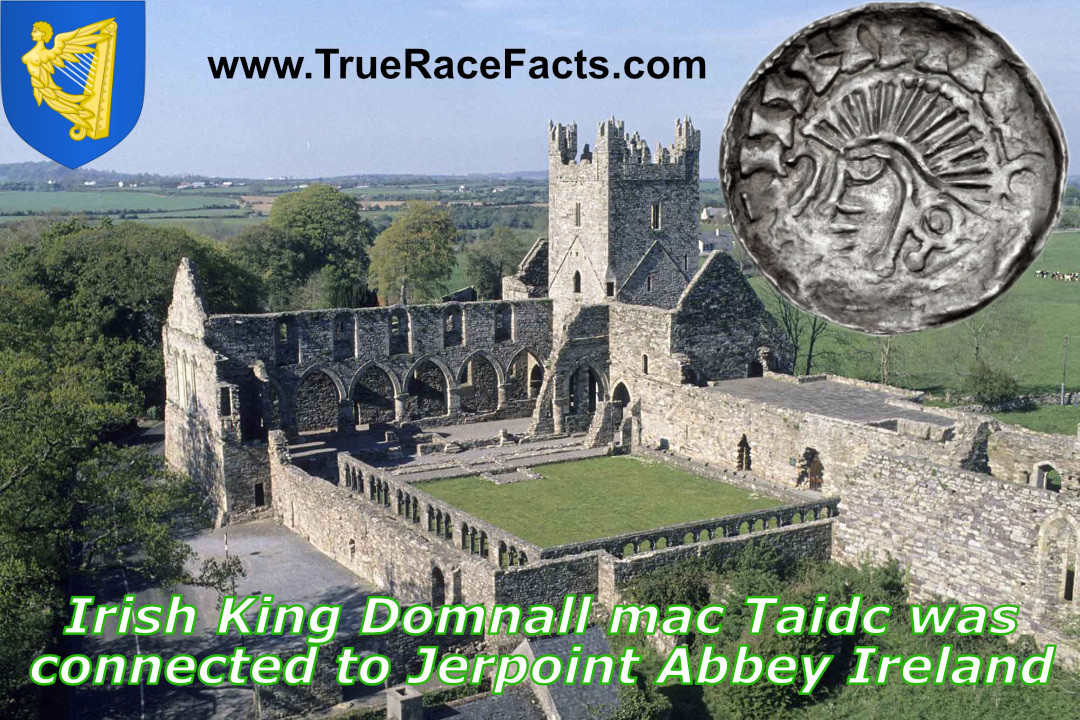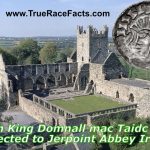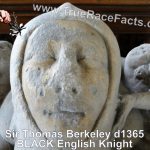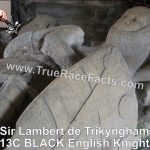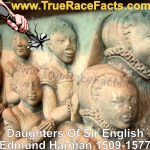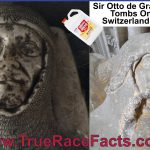Jerpoint Cistercian Abbey
- Guinevere Jackson
- 3 November 2024
- 0 Comment
Donnchad Mac Gilla Pátraic and the Legacy of Jerpoint Abbey
The story of Jerpoint Abbey, a historic Cistercian monastery in southeastern Ireland, begins with the legacy of one of Osraige’s most notable dynasties, the Mac Gilla Pátraics (or FitzPatricks). Although the abbey itself was founded in 1180, long after Donnchad Mac Gilla Pátraic’s reign, the history of this royal family left a lasting imprint on the region, paving the way for their later support of Jerpoint Abbey.
Who Was Donnchad Mac Gilla Pátraic?
Donnchad Mac Gilla Pátraic (died 1039) was a powerful king of Osraige (Ossory), the kingdom in present-day Kilkenny and Laois. Ruling during the early 11th century, Donnchad was renowned for his military prowess and strategic alliances, making him a formidable figure among Irish and Norse rulers. He played a significant role in shaping the region’s politics, frequently aligning with and challenging neighboring kings, including the influential High Kings of Ireland.
The Mac Gilla Pátraics ruled Osraige for centuries, establishing themselves as a resilient and influential dynasty within medieval Ireland. Under Donnchad’s leadership, the family strengthened Osraige’s autonomy, a legacy that would enable his descendants to maintain control over the kingdom even as the political landscape shifted with the arrival of the Normans in the 12th century.
The Founding of Jerpoint Abbey
Jerpoint Abbey was founded in 1180, over a century after Donnchad’s death, during the period of Norman expansion in Ireland. This magnificent abbey was established by Donal Mac Gilla Pátraic, a later descendant of Donnchad, who served as Lord of Osraige at the time. It was built near the town of Thomastown in County Kilkenny, an area that had long been under the influence of the Mac Gilla Pátraic dynasty.
Jerpoint Abbey was designed in the Cistercian tradition, with impressive Romanesque arches, intricate stone carvings, and a serene cloister. Its foundation reflected both the influence of the Norman settlers, who encouraged Cistercian reform across Ireland, and the continued prominence of the Mac Gilla Pátraics, who embraced this new religious institution as a testament to their faith and power.
The Mac Gilla Pátraics’ Patronage of Jerpoint Abbey
Donal Mac Gilla Pátraic’s support of Jerpoint Abbey underscored his family’s adaptability and dedication to fostering religious and cultural development in Osraige. As Norman influence spread, Irish dynasties like the Mac Gilla Pátraics found ways to align with the new rulers and their institutions, ensuring their continued presence and authority. By supporting the Cistercian abbey, the Mac Gilla Pátraics not only showcased their piety but also maintained strong local ties and influence in the region.
Jerpoint Abbey thrived over the next few centuries, becoming a significant religious center that attracted pilgrims and scholars from across Ireland. Many notable members of the Mac Gilla Pátraic family, along with other local patrons, were likely buried at the abbey, and they supported its growth with land, financial backing, and political influence.
Legacy and Conclusion
Donnchad Mac Gilla Pátraic’s legacy, though rooted in the warrior culture of medieval Irish kings, helped lay the foundations for a dynasty that adapted and endured through centuries of change. His descendants’ role in establishing and supporting Jerpoint Abbey represents a blend of old Gaelic tradition and the new religious reforms brought by the Normans. Jerpoint Abbey stands today not only as a testament to Cistercian architecture and spirituality but also as a reminder of the enduring influence of the Mac Gilla Pátraic family in the heart of medieval Ireland.
As you walk through the ruins of Jerpoint Abbey, you are treading on the lands shaped by Donnchad’s legacy, where his family later intertwined faith, tradition, and regional power in a lasting monument to their era. The Mac Gilla Pátraic dynasty’s influence in Osraige, from the days of Donnchad to the founding of Jerpoint, is woven into the very stones of the abbey, offering a glimpse into the medieval world they helped shape.
“You don’t destroy what looks like you”
Guinevere Jackson
Image citation attached to images
- 12th century
- Anglo Saxon
- baron
- Black
- Black Nobility
- Brotar Mac Torcaill
- classical
- Deception
- Domnall mac Taidc Ua Briain
- England
- Hebrew
- hidden history
- historical
- iconoclasm
- identity theft
- Ireland
- Irish
- Israelite
- Jerpoint Cistercian Abbey
- kings
- Knight
- Landowner
- lies
- medieval
- medieval Ireland
- music
- Negro
- Nobility
- northern kingdom
- Politician
- swarthy
- Theft
- truth
- wealthy


